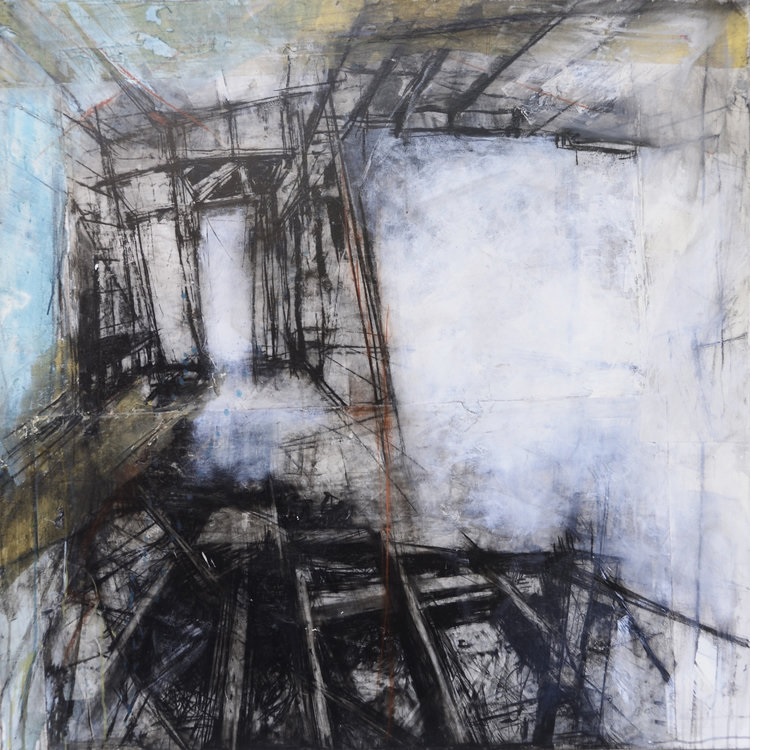The artwork on the first floor of HSEB may seem like a departure in ways from previous Art in Medicine exhibits. Sam Woolcott’s work is compelling, complex, and richly layered like the artist herself. Few pieces of art lend themselves to immediate interpretation, but this latest exhibit is particularly enigmatic.
Sam Woolcott started as an architecture student. A year-long break in her schooling became five years on a boat in Greece. During this time, she taught herself to paint. These influences are clear in her exhibited work. The pieces are full of stark contrasts: light and dark and strong lines slashing across gently colored backdrops. The subjects are variants on architectural, nautical, and natural themes: turbines, boat hulls, houses broken open and filled with light and dark, houses breaking free of moorings and drifting away.
Woolcott spent some time on campus on November 2nd for a talk about her artwork and career. Some of the questions that came up in the Q & A on November 2nd related to how art, and specifically Woolcott’s art, might be integrated into our medical curriculum. The program director, Dr. Cynthia Standley, fielded most of these. She emphasized the importance of viewing the paintings and noting observations and emotional responses before viewing the paintings’ titles and any explanation the artist might have provided. The next step, per Dr. Standley, is to see how initial interpretations and observations change.
Woolcott’s work lends itself very well to this exercise. As an example, see the photo below. If you’re willing to engage in the practice, take a few minutes and study it, then make note of your responses.
When “Hardscrabble Lives” went up, this painting drew me in more than any others. I saw it as two halves before I put together the integrated whole. Half an emptiness full of light, and half the dark bones of a long-forgotten building. As I continued to stop and look at it for a few moments everyday, I saw more how the light entered that dark half of the painting and how the darker structural lines are incorporated into the illuminated half. It is as if we are seeing something slowly washed white as the sun draws across the sky.
I’m cheating here a little bit because I know the title of the piece now, “Into the void.” I’ve read her description of the piece as an exploration of light. I also attended her talk when she discussed this piece and the title. You could see the void two different ways, she explained, the dark half of the painting or the bright. My interpretation of this piece is still mine, but it has been transformed by the things I learned. I am not entirely sure I could truthfully recall how I initially experienced the piece. My description above is close, but knowing more about the painter and painting has undoubtedly transformed my experience with the work.
I think this is one of the important lessons art can teach us as future physicians and health care professionals. New knowledge about a person, situation, or painting can’t be undone. When we know more about our patients, we see them differently. When we know more about how we see our patients, we become different. These lessons in observation are a first step to deeper and more profound relationships with our future and current patients and others.
Stay tuned in future issues for an interview with Sam Woolcott and her thoughts on art, the artists’ perspective, and what motivates her work.
Charlotte Archuleta is a class of 2020 medical student at UACOM-P and a very happy Arizona transplant. She moved to Arizona in 2012 after graduating from UNC Chapel Hill with an English and Dramatic Arts degree. She also has a Master's degree in Physiology and Complementary and Alternative Medicine from Georgetown. She chose to pursue medicine because she loves learning. She is excited to bring this passion to her future health care career.


